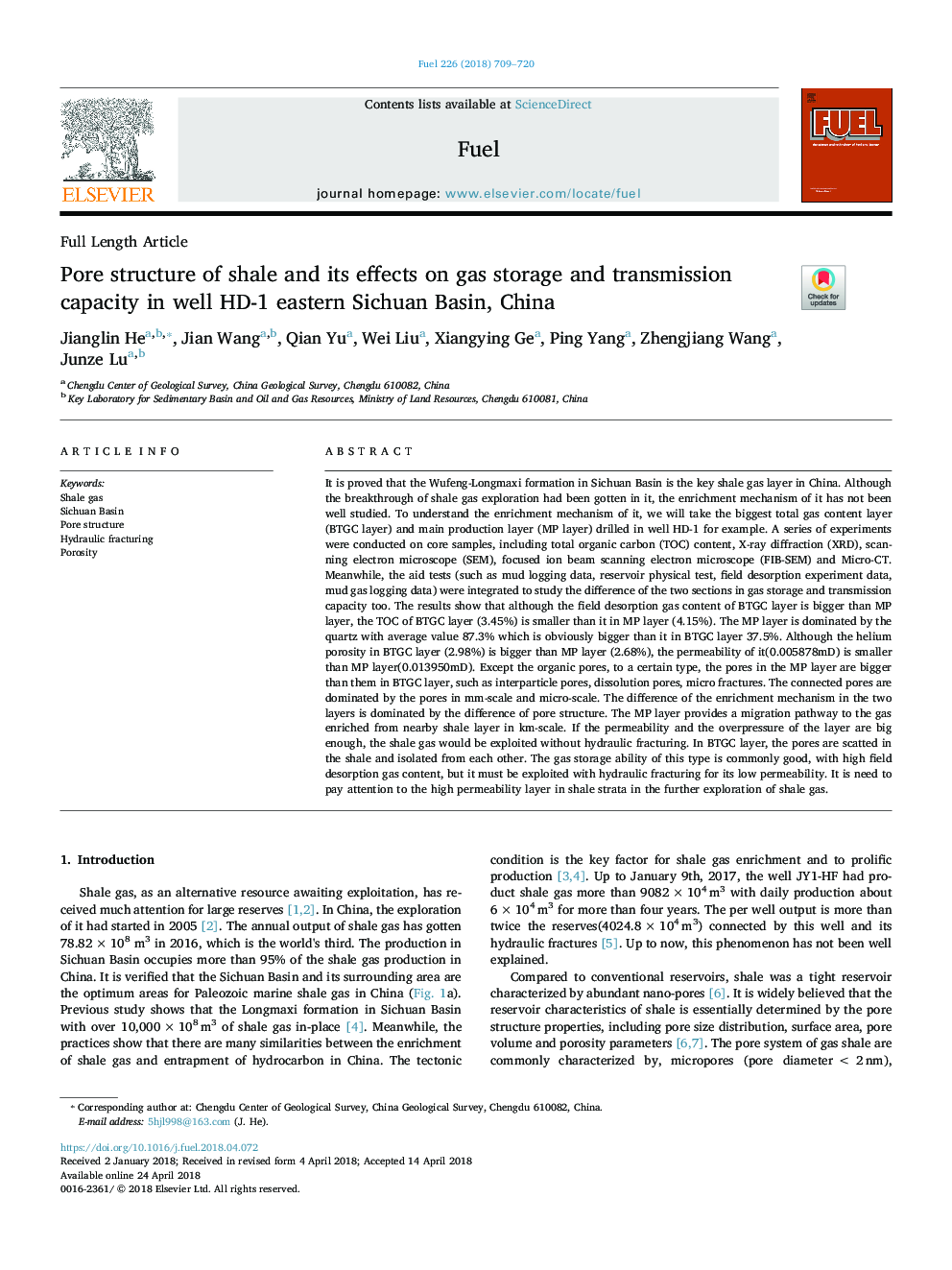| کد مقاله | کد نشریه | سال انتشار | مقاله انگلیسی | نسخه تمام متن |
|---|---|---|---|---|
| 6630960 | 1424938 | 2018 | 12 صفحه PDF | دانلود رایگان |
عنوان انگلیسی مقاله ISI
Pore structure of shale and its effects on gas storage and transmission capacity in well HD-1 eastern Sichuan Basin, China
دانلود مقاله + سفارش ترجمه
دانلود مقاله ISI انگلیسی
رایگان برای ایرانیان
کلمات کلیدی
موضوعات مرتبط
مهندسی و علوم پایه
مهندسی شیمی
مهندسی شیمی (عمومی)
پیش نمایش صفحه اول مقاله

چکیده انگلیسی
It is proved that the Wufeng-Longmaxi formation in Sichuan Basin is the key shale gas layer in China. Although the breakthrough of shale gas exploration had been gotten in it, the enrichment mechanism of it has not been well studied. To understand the enrichment mechanism of it, we will take the biggest total gas content layer (BTGC layer) and main production layer (MP layer) drilled in well HD-1 for example. A series of experiments were conducted on core samples, including total organic carbon (TOC) content, X-ray diffraction (XRD), scanning electron microscope (SEM), focused ion beam scanning electron microscope (FIB-SEM) and Micro-CT. Meanwhile, the aid tests (such as mud logging data, reservoir physical test, field desorption experiment data, mud gas logging data) were integrated to study the difference of the two sections in gas storage and transmission capacity too. The results show that although the field desorption gas content of BTGC layer is bigger than MP layer, the TOC of BTGC layer (3.45%) is smaller than it in MP layer (4.15%). The MP layer is dominated by the quartz with average value 87.3% which is obviously bigger than it in BTGC layer 37.5%. Although the helium porosity in BTGC layer (2.98%) is bigger than MP layer (2.68%), the permeability of it(0.005878mD) is smaller than MP layer(0.013950mD). Except the organic pores, to a certain type, the pores in the MP layer are bigger than them in BTGC layer, such as interparticle pores, dissolution pores, micro fractures. The connected pores are dominated by the pores in mm-scale and micro-scale. The difference of the enrichment mechanism in the two layers is dominated by the difference of pore structure. The MP layer provides a migration pathway to the gas enriched from nearby shale layer in km-scale. If the permeability and the overpressure of the layer are big enough, the shale gas would be exploited without hydraulic fracturing. In BTGC layer, the pores are scatted in the shale and isolated from each other. The gas storage ability of this type is commonly good, with high field desorption gas content, but it must be exploited with hydraulic fracturing for its low permeability. It is need to pay attention to the high permeability layer in shale strata in the further exploration of shale gas.
ناشر
Database: Elsevier - ScienceDirect (ساینس دایرکت)
Journal: Fuel - Volume 226, 15 August 2018, Pages 709-720
Journal: Fuel - Volume 226, 15 August 2018, Pages 709-720
نویسندگان
Jianglin He, Jian Wang, Qian Yu, Wei Liu, Xiangying Ge, Ping Yang, Zhengjiang Wang, Junze Lu,